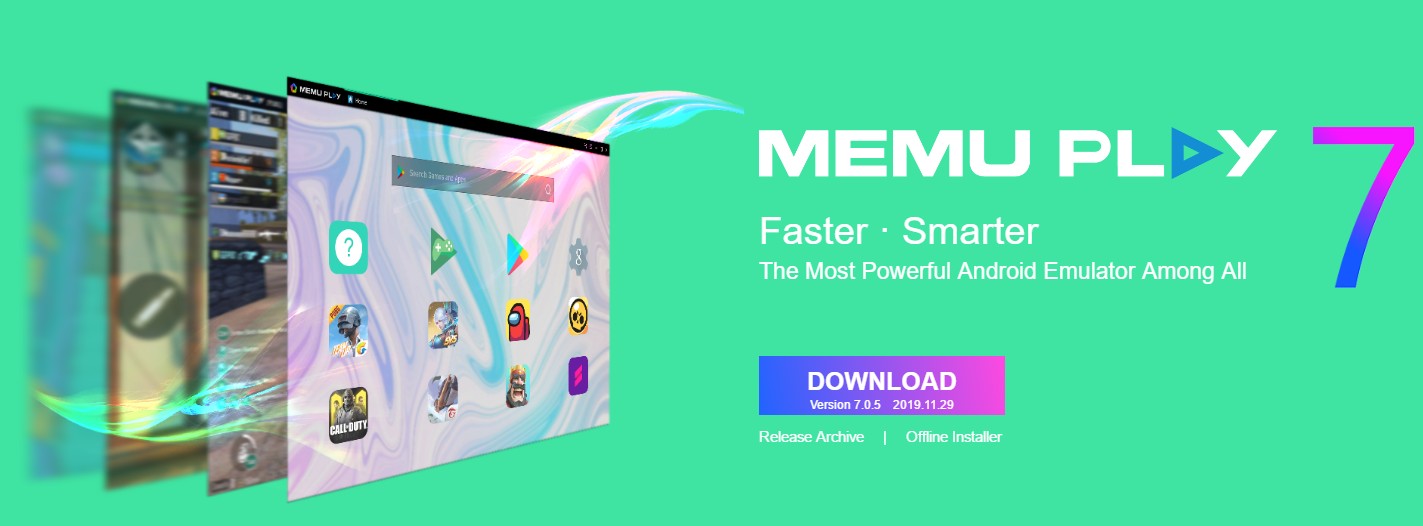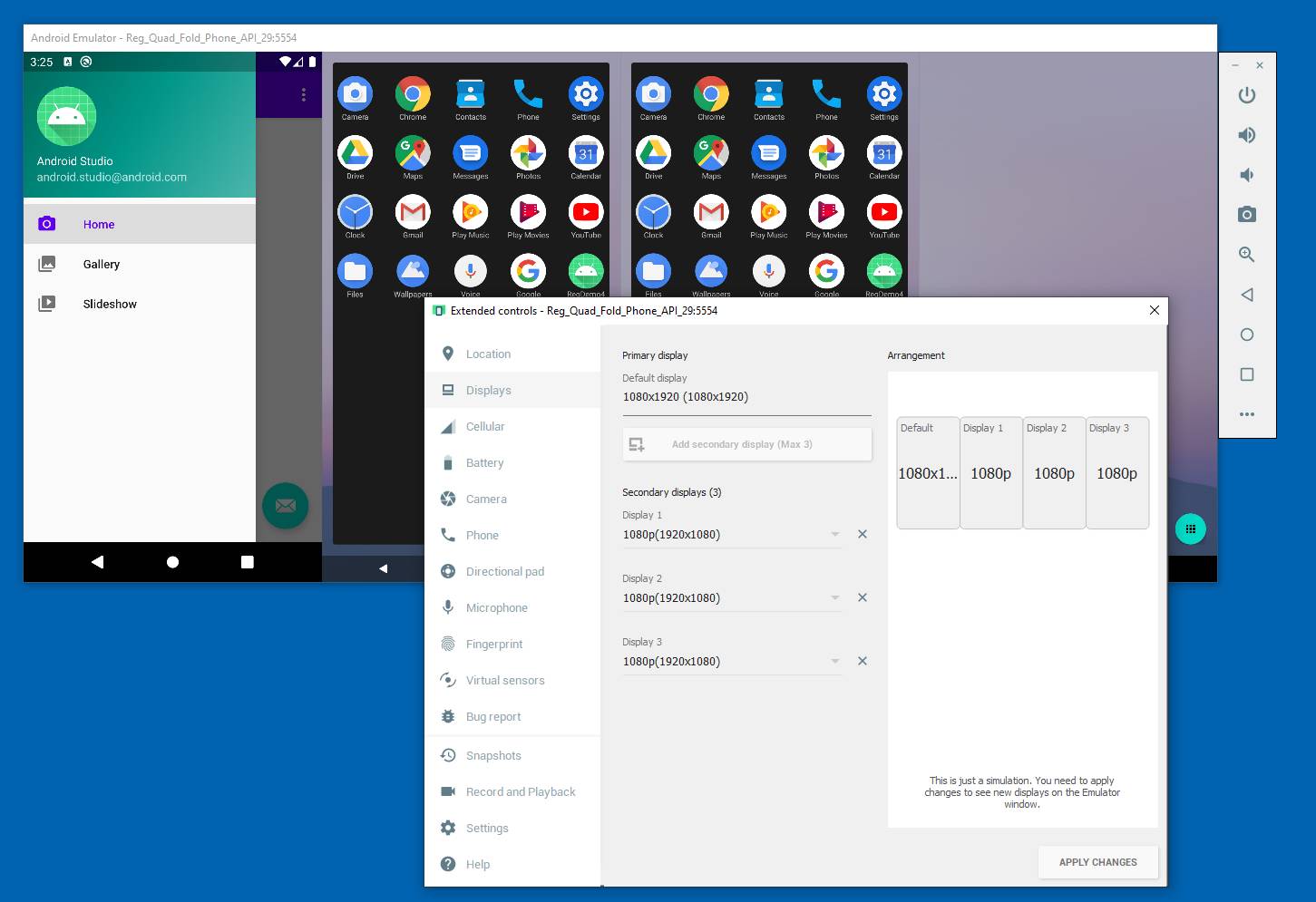This page is deprecated. Redirecting to https://developer.android.com/studio/run/emulator.html
Method 1: Update Android Emulator to the Latest Release. As blunt as it may sound, but updating the emulator which you’re running could simply end your problem, for eg. If you’re working on API Level 30 and your emulator version is 30.1.2 then updating it to 30.1.5 would perhaps resolve your issue. Updating Emulator is a breeze, simply. Download the latest (or suitable emulator) from the links supplied below When done, decompress the downloaded emulator.zip file and extract the emulator package to. After this your emulator will be updated (to 27.3.8 in my case). Create new Android Virtual Device (AVD) Open the AVD Manager from Android Studio. Click Create Virtual Device. Select the defaults for Nexus 5x. Select a system image, such as Marshmallow - API 23 - x86. Select Show Advanced Settings. Select the Multi-Core CPU check box. The number of cores.
The Android Studio 2.0 (or higher) preview includes the new Android Emulator 2.0 with improved performance and a new user interface to control device features. This page describes some of the changes compared to the emulator available with the stable version of Android Studio 1.5 and how to setup your development environment to use the Android Emulator.
For best performance with Android Emulator 2.0, your system should meet the following specifications:
Windows: Intel® processor with support for Intel® VT-x, Intel® EM64T (Intel® 64), and Execute Disable (XD) Bit functionality. AMD and Intel Atom processors do not support VT-x virtual machine acceleration.
Linux: Intel® processor with support for Intel® VT-x, Intel® EM64T (Intel® 64), and Execute Disable (XD) Bit functionality or AMD processors with support for AMD Virtualization™ (AMD-V™)
64-bit Operating Systems.
New Features
The most valuable updates to the Android Emulator are the speed improvements. When running with Android Studio 2.0 or higher on an x86 machine, response time is faster than the previous Android Emulator and you can transfer files from your machine faster than a physical Android device.
The latest Android Emulator supports new multi-finger touch inputs, including pinch zoom and two finger rotate gestures. Holding down Alt or Option reveals two finger points. Moving the mouse moves one finger and the second finger is mirrored across an anchor point. Clicking the left mouse button enables pinch-zoom gestures and clicking the right mouse button enables two-finger rotate gestures (such as to tilt the perspective when viewing a map).
The panel on the right side of the emulator lets you perform common tasks, such as rotate the screen, capture screenshots, and zoom in on the display.
To install apps, you can drag and drop an APK right on the emulator. You can also drag and drop other file types and they'll be saved to the /sdcard/Download/ directory.
At the bottom of the toolbar on the right is an ellipsis button that opens the Extended Controls window. In here you'll find various controls that invoke device events and mock device sensors.
Keyboard shortcuts are available for most actions and are listed in the Help panel, listed on the left.
Get Android Emulator 2.0
The new Android Emulator is available with Android Studio 2.0 or higher, which is available in both the Stable, Beta and Canary channels.
Once you make sure you have the appropriate emulator system image and other tools:

Open the SDK Manager from Android Studio.
Click the SDK Platforms tab, and select the check box for a recent version such as the Android 6.0 (Marshmallow). By default, this includes the x86 system image that you need for the emulator. You can see and modify the files to download by clicking Show Package Details at the bottom-right.
Click the SDK Tools tab, then select the check boxes for the following:
Android SDK Tools (25.0.0 or higher to get the new emulator)
Android SDK Platform-Tools (23.1.0 or higher to get the fast ADB)
Intel x86 Emulator Accelerator (HAXM installer) (rev 6.0.1 or higher to get CPU acceleration)
Click OK to check for updates.

Create new Android Virtual Device (AVD)
To take advantage of the new Android Emulator and adb speeds, you need to create new AVDs. In this example below, we are creating a Nexus 5x AVD.
Open the AVD Manager from Android Studio.
Click Create Virtual Device.
Select the defaults for Nexus 5x.
Select a system image, such as Marshmallow - API 23 - x86.
Select Show Advanced Settings.
Select the Multi-Core CPU check box. The number of cores available depends on the number of cores available on your development machine.
Run your new Android Virtual Device by click on the green Play button.
You should see the Android Emulator now start up.
Troubleshooting
Android Emulator Update Windows 10
Check Intel x86 Emulator Accelerator Installation
If you selected the defaults during the Android Studio installation you should be ready to go. If you created a custom Android Studio installation or run into issues, read the troubleshooting guide below. If your Intel x86 Emulator Accelerator is out of date, Android Studio will automatically inform you and suggest a quick fix to update, as shown in the following screenshot in the AVD Manager.
Installing CPU Accelerator (HAXM)
If you skipped the initial setup of Android Studio, you should make sure the CPU acceleration is installed.

You can manually install Intel x86 Emulator Accelerator by opening intelhaxm-android.exe (on Windows) or intelHAXM_6.0.1.dmg (on Mac) from /sdk/extras/intel/Hardware_Accelerated_Execution_Mangager, as shown below:
Installing HAXM in Windows

Installing HAXM in OS X
For Linux, the Android emulator usesKernel-based Virtual Machine (KVM). If you are using Ubuntu, you can run check your KVM system compatibility by running the following on the command line:
Android Emulator Update Adb
$egrep –c '(vmx|svm)' /proc/cpuinfo
on the command line to check for for a return value of greater than 1
To check if you have KVM installed by running the following on the command line:
$kvm-ok
If KVM is missing or to ensure you have the latest KVM installed, run the following on the command line:
$sudo apt-get install qemu-kvm libvirt-bin ubuntu-vm-builder bridge-utils ia32-libs-multiarch
The linux commands look like the following on Ubuntu:
Known Issues
Emulating inbound phone call freezes emulator.
Screenshot feature crashes emulator in certain conditions.
If an AVD has been opened in a previous version of the emulator, it may not boot in the new emulator, therefore create a new AVD.
OSX - screen doesn't go black when you sleep the device.
Linux - segfault on exit in some conditions.
'-gpu mesa' option not supported.
'-net*' option not supported.
'-no-window' option not supported.
Remote desktop not supported.
Emulated hardware 'recents' key doesn't work in older system images.
Multiple DNS servers not supported.
If you find other issues in the Android Emulator, pleasefile a bug report.
We have more features in the pipeline, but if you may also submit feature requests.
Youwave Android Emulator 4.1.2 Full Crack Version – This application is a very lightweight android emulator on a PC or laptop.
The function of the emulator itself is that it can run applications and android games. but unfortunately, not all applications support installed on Youwave.
Youwave Android Emulator 4.1.2 Full Version
It is the latest version and also Supports Android 4.0 ICS Home Version and 2.3 Gingerbread Basic Version.
Youwave itself was chosen because it does not require computer or laptop specs that are too high as used by Bluestack and Windroye.
Youwave Android Emulator Overview
Name: Youwave
Version: 4.1.2
OS: Windows XP, Vista, Windows 7 or 8 32/64 bits
Size: 150 MB
Youwave Android Emulator 4.1.1 Features
- Dynamic rotating – phone-like instant response
- Simulated SD card functionality – game saving
- Saved State – enables fast restart
- Enables multi-player online games
- Supports Android 4.0 ICS (Home Version (new)) and 2.3 Gingerbread (Basic Version)
- Volume control buttons
- Retractable control panel
Minimum System Requirements
- Intel Pentium 4
- RAM: 512
- Disk space: 500MB
How to Install Youwave Android Emulator 4.1.2 Full Crack Version
- Download and extract Youwave Emulator 4.1.2 + crack
- Install the Youwave Android setup until it’s complete and doesn’t open it first
- Copy the crack and paste it into the Android C / program le / YouWave directory
- Run Youwave Android
- Done
How to Install the Apk App on Youwave
- First, download the Apk application here
- Copy the Apk le into the C / user / pc / Youwave folder
- Run Youwave Android and after the application appears on the left then double click then the installation process will run
Download Android Youwave 4.1.2 Full Version Crack
- Youwave Android 4.1.2 Full Version + Crack
- Youwave Crack only
NOTE: *Use At Your Own Risk. Tech Mint Is Not Responsible For Any Mis-Use Or Cyber Crime If Occured.
Android Emulator For Windows 10
Conclusion:
We hope you have received all the relevant information which you were seeking. This Emulator is literally an amazing app that serves all the purpose of your usage of your internet.
Thank you for visiting & giving your valuable time.